Instability and Atomization of Liquid Cylinders after Shock Wave’s Impacting
Abstract
:1. Introduction
2. Experimental Devices
3. Results and Discussion
4. Conclusions
Author Contributions
Funding
Institutional Review Board Statement
Informed Consent Statement
Data Availability Statement
Conflicts of Interest
References
- Hermanson, J.C.; Papas, P.; Kay, I.W. Structure and penetration of a supercritical fluid jet in supersonic flow. J. Propuls. Power 1994, 10, 387–394. [Google Scholar] [CrossRef]
- Li, H.-S.; Kelly, R.E. The instability of a liquid jet in a compressible airstream. Phys. Fluids A 1992, 4, 2162–2168. [Google Scholar] [CrossRef]
- Li, H.-S.; Karagozian, A.R. Breakup of liquid jet in supersonic crossflow. AIAA J. 1992, 30, 1919–1921. [Google Scholar] [CrossRef]
- Meekunnasombat, P.; Oakley, J.G.; Anderson, M.H.; Bonazza, R. Experimental study of shock-accelerated liquid layers. Shock Waves 2006, 15, 383–397. [Google Scholar] [CrossRef]
- Shi, H.H.; Zhang, G.; Du, K.; Jia, H.X. Experimental study of the mechanism of Richtmyer-Meshkov instability at a gas/liquid interface. J. Hydrodyn. Ser. B 2009, 21, 423–428. [Google Scholar] [CrossRef]
- Mikaelian, K.O. Extended model for Richtmyer-Meshkov mix. Phys. D Nonlinear Phenom. 2011, 240, 935–942. [Google Scholar] [CrossRef] [Green Version]
- Gordon, G.D. Mechanism and speed of breakup of drops. J. Appl. Phys. 1959, 20, 1759–1761. [Google Scholar] [CrossRef]
- Wierzba, A.; Takayama, K. Experimental investigation of aerodynamic breakup of liquid drops. AIAA J. 1998, 26, 1329–1335. [Google Scholar] [CrossRef]
- Hisang, L.P.; Faeth, G. Near-limit drop deformation and secondary breakup. Int. J. Multiph. Flow 1992, 18, 635–652. [Google Scholar] [CrossRef] [Green Version]
- Hisang, L.P.; Faeth, G. Drop deformation and breakup due to shock wave and steady disturbances. Int. J. Multiph. Flow 1995, 21, 545–560. [Google Scholar] [CrossRef]
- Igra, D.; Takayama, K. Numerical simulation of shock wave interaction with a water column. Shock Waves 2001, 11, 219–228. [Google Scholar] [CrossRef]
- Chen, H.; Liang, S.M. Flow visualization of shock/water column interactions. Shock Waves 2008, 17, 309–321. [Google Scholar] [CrossRef]
- Wang, C.; Wu, Y.; Shi, H.H.; Xiao, Y. Breakup process of a droplet under the impact of a shock wave. Explos. Shock Waves 2016, 36, 1775–1779. (In Chinese) [Google Scholar]
- Rossano, V.; De Stefano, G. Computational evaluation of shock wave interaction with a cylindrical water column. Appl. Sci. 2021, 11, 4934. [Google Scholar] [CrossRef]
- Rossano, V.; Cittadini, A.; De Stefano, G. Computational evaluation of shock wave interaction with a liquid droplet. Appl. Sci. 2022, 12, 1349. [Google Scholar] [CrossRef]
- Rossano, V.; De Stefano, G. Hybrid VOF–Lagrangian CFD Modeling of Droplet Aerobreakup. Appl. Sci. 2022, 12, 8302. [Google Scholar] [CrossRef]
- Chen, H. Two-dimensional simulation of stripping breakup of a water droplet. AIAA J. 2008, 46, 1135–1143. [Google Scholar] [CrossRef]
- Ben, G.; Yao, L.; Yung, W.C.; Hua, S. Numerical Study on Liquid Droplet Internal Flow Under Shock Impact. AIAA J. 2018, 56, 9. [Google Scholar]
- Sharma, S.; Singh, A.P.; Rao, S.S.; Kumar, A.; Basu, S. Shock induced aerobreakup of a droplet. J. Fluid Mech. 2021, 929, A27. [Google Scholar] [CrossRef]
- Igra, D.; Takayama, K. Investigation of aerodynamic breakup of a cylindrical water droplet. At. Spary 2001, 11, 167–185. [Google Scholar]
- Sembian, S.; Liverts, M.; Tillmark, N.; Apazidis, N. Plane shock wave interaction with a cylindrical water column. Phys. Fluids 2016, 28, 056102. [Google Scholar] [CrossRef]
- Xu, J.; Wang, H.; Feng, L.; Zhai, Z.; Luo, X. Interaction of a shock with two concentric/eccentric cylinders. Exp. Fluids 2021, 62, 1–12. [Google Scholar] [CrossRef]
- Shi, H.H.; Xiao, Y.; Wu, Y. A Device Applied for the Interaction between Shock Waves and Various Shapes’ Liquids. Chinese Patent No. ZL201220233805.7, 23 May 2012. (In Chinese). [Google Scholar]
- Xiao, Y.; Shi, H.H.; Wu, Y.; Wang, C.; Zhang, L.T.; Dong, R.L. Experimental study of the shock-induced acceleration and breakup of liquid droplets. In Proceedings of the 29th lnternational Symposium on Shock Waves, CD-ROM, Paper No. 0246-000071. Madison, WI, USA, 14–19 July 2013. [Google Scholar]
- Shi, H.H.; Xiao, Y.; Wu, Y.; Zhang, L.T.; Wang, C.; Dong, R.L. Experimental study of the Richtmyer−Meshkov instability in the interaction of shock waves with liquid column. J. Eng. Thermophys. 2014, 35, 1775–1779. (In Chinese) [Google Scholar]
- Zhang, K. The Mechanism of Liquid Columns’ Deformation and Breakup Process under the Action of Shock Wave. Master’s Thesis, Zhejiang Sci-Tech University, Hangzhou, China, 2015. (In Chinese). [Google Scholar]
- Shi, H.H.; Wang, T.Y.; Liu, J.H.; Zhang, K.; Dong, R.L.; Zhang, Y.B. Research on deformation and breakup of multiple liquid cylinders after the impact by shock waves. J. Eng. Thermophys. 2020, 41, 1931–1939. (In Chinese) [Google Scholar]
- Richtmyer, R.D. Taylor instability in shock acceleration of compressible fluids. Commun. Pure Appl. Math. 1960, 13, 297–319. [Google Scholar] [CrossRef]
- Alon, U.; Hecht, J.; Ofer, D.; Shvarts, D. Power laws and similarity of Rayleigh-Taylor and Richtmyer-Meshkov mixing fronts at all density ratios. Phys. Rev. Lett. 1995, 74, 534–537. [Google Scholar] [CrossRef] [PubMed]
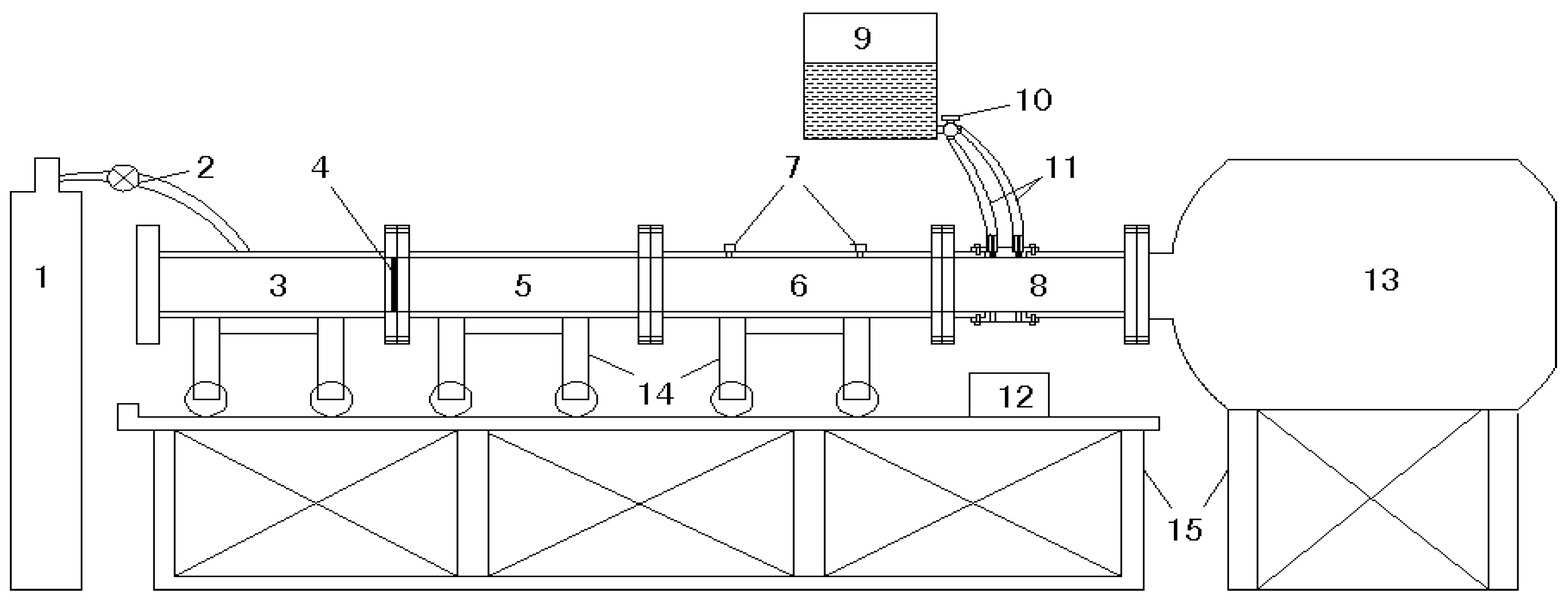



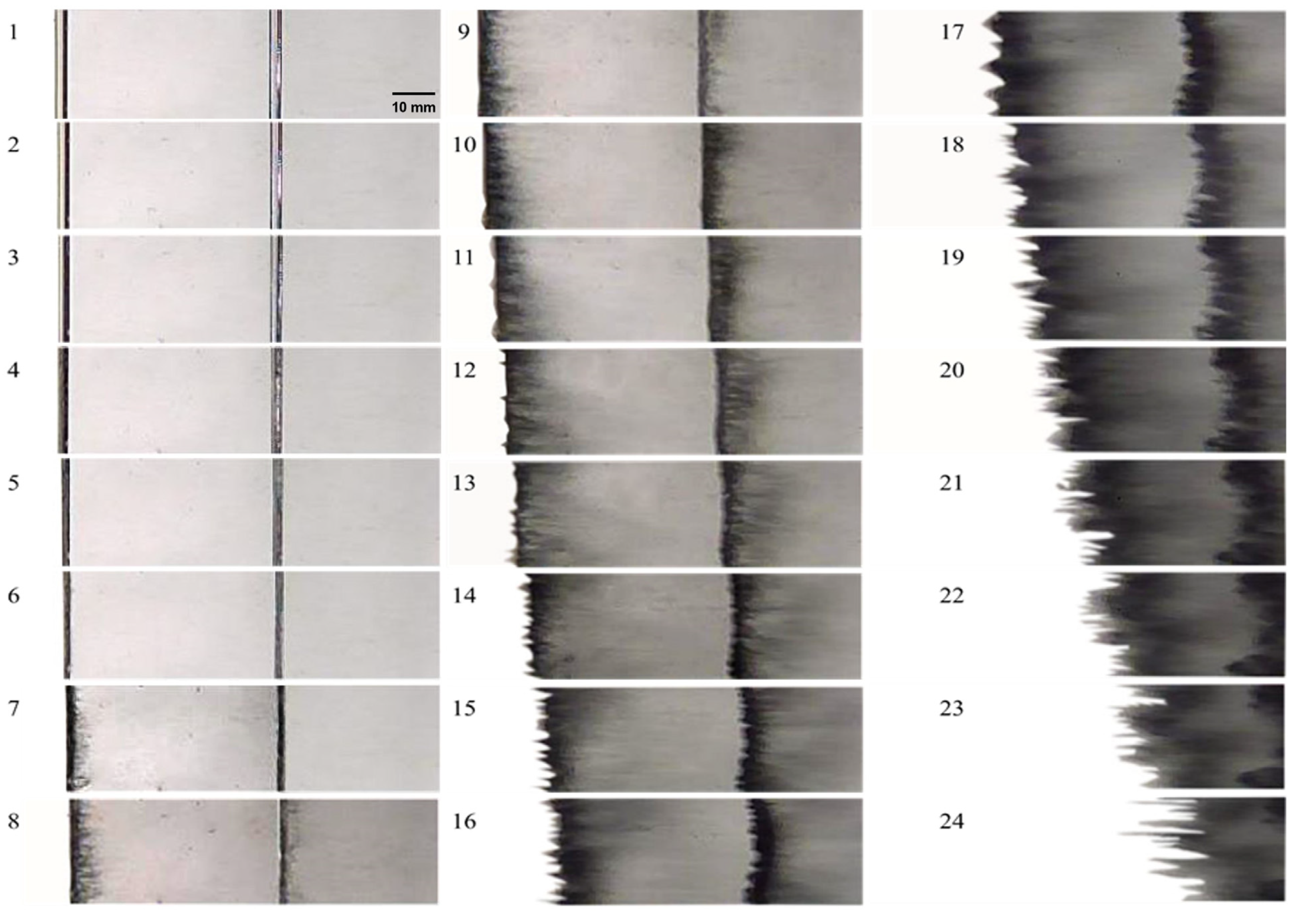
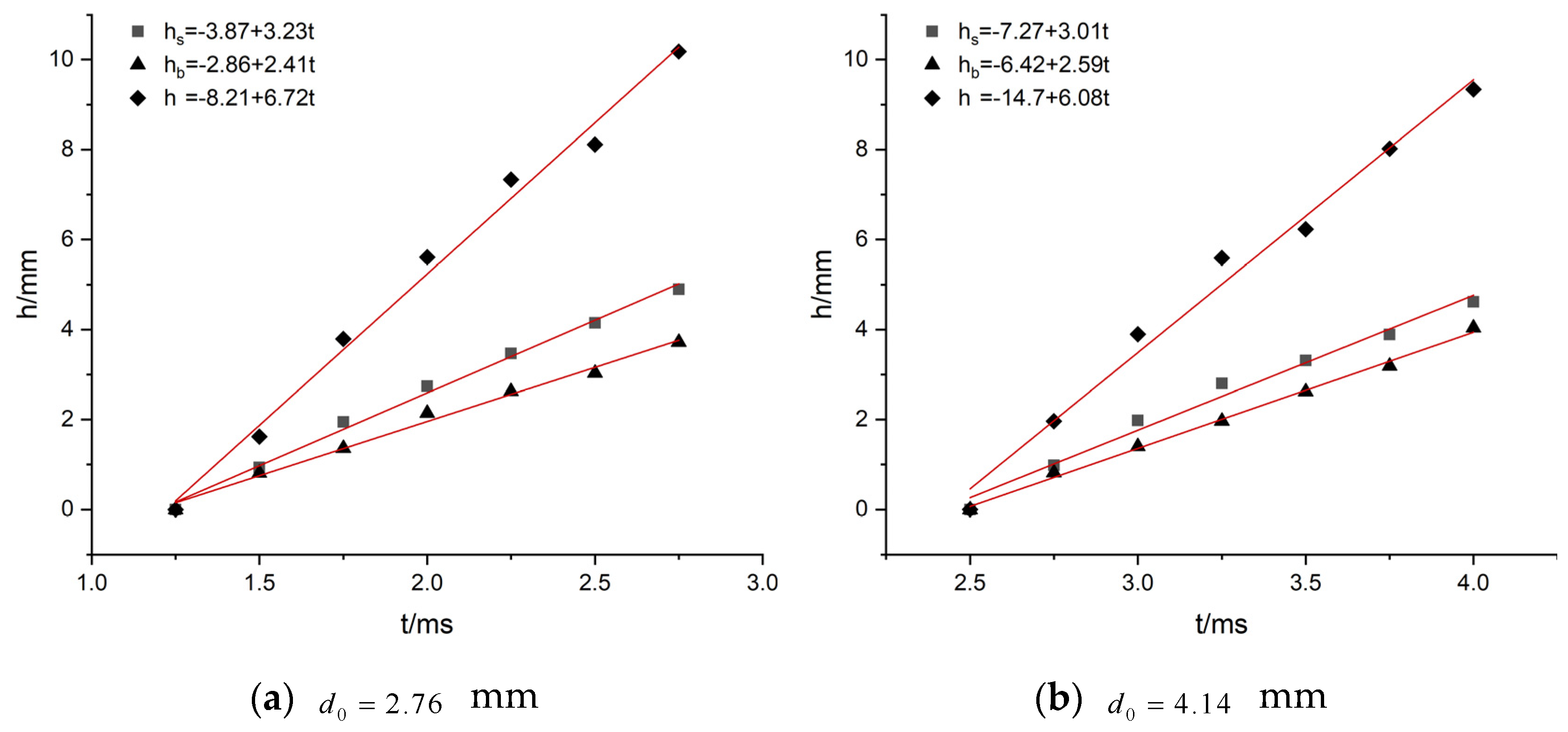
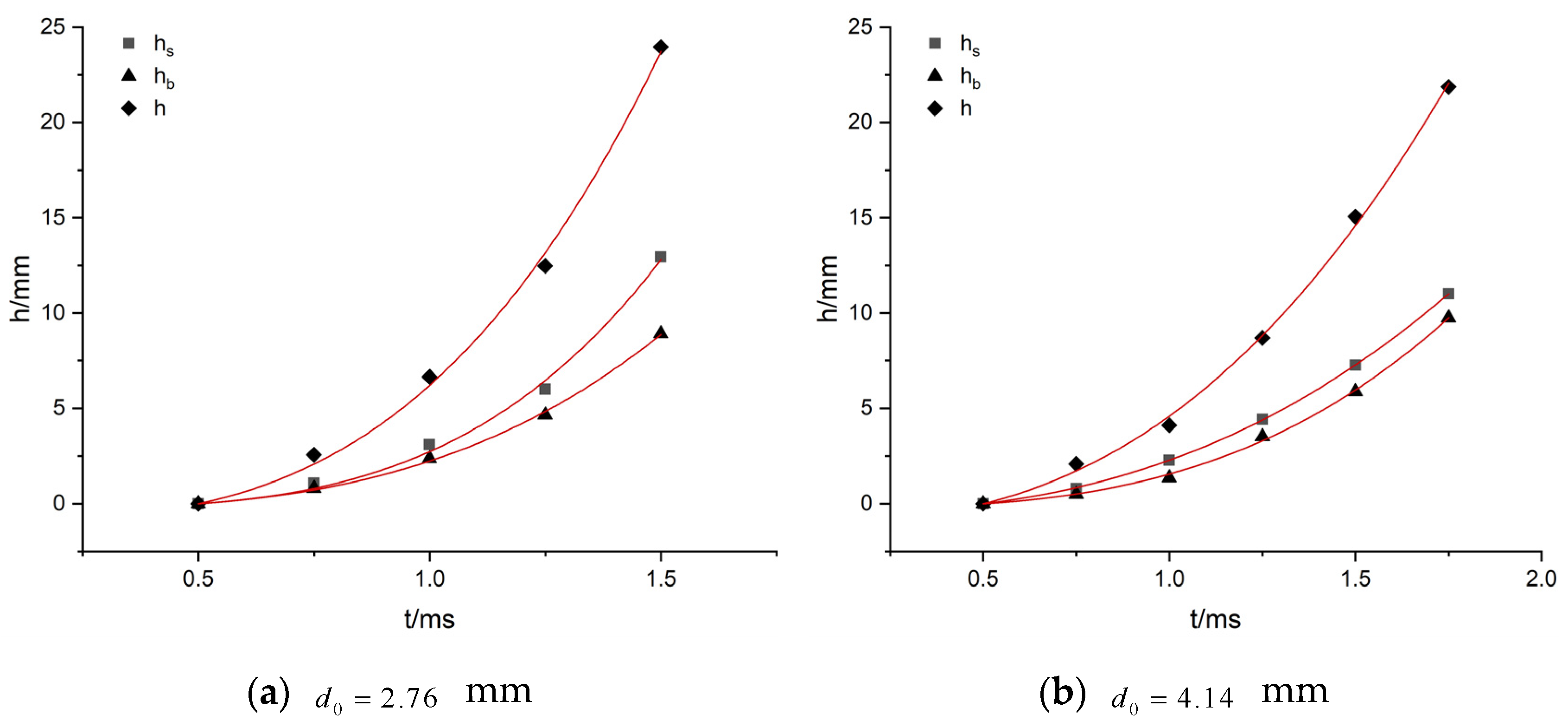
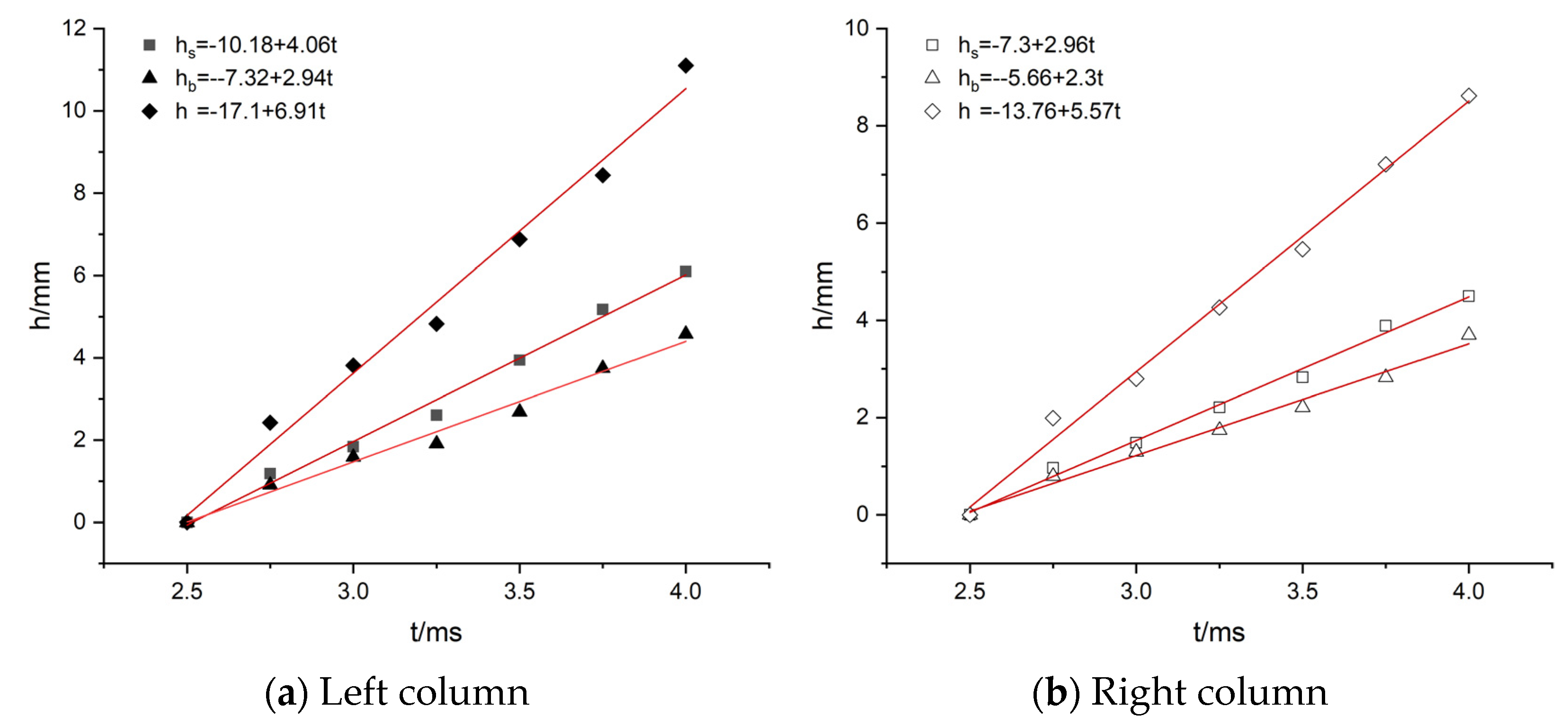

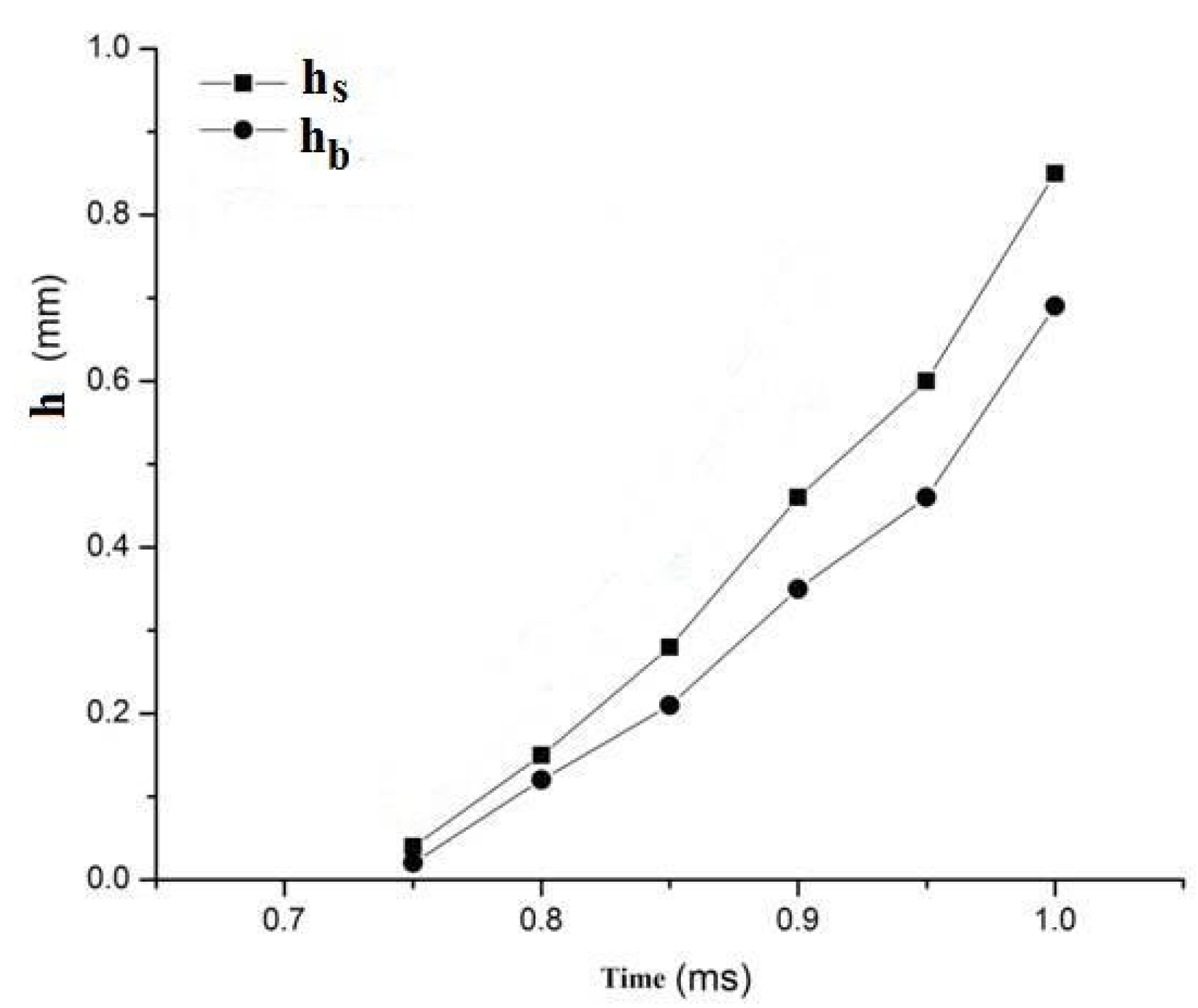
Publisher’s Note: MDPI stays neutral with regard to jurisdictional claims in published maps and institutional affiliations. |
© 2022 by the authors. Licensee MDPI, Basel, Switzerland. This article is an open access article distributed under the terms and conditions of the Creative Commons Attribution (CC BY) license (https://creativecommons.org/licenses/by/4.0/).
Share and Cite
Chen, C.-Y.; Dong, R.-L.; Shi, H.-H.; Liu, Y. Instability and Atomization of Liquid Cylinders after Shock Wave’s Impacting. Appl. Sci. 2022, 12, 12597. https://doi.org/10.3390/app122412597
Chen C-Y, Dong R-L, Shi H-H, Liu Y. Instability and Atomization of Liquid Cylinders after Shock Wave’s Impacting. Applied Sciences. 2022; 12(24):12597. https://doi.org/10.3390/app122412597
Chicago/Turabian StyleChen, Chen-Yuan, Ruo-Ling Dong, Hong-Hui Shi, and Yi Liu. 2022. "Instability and Atomization of Liquid Cylinders after Shock Wave’s Impacting" Applied Sciences 12, no. 24: 12597. https://doi.org/10.3390/app122412597




